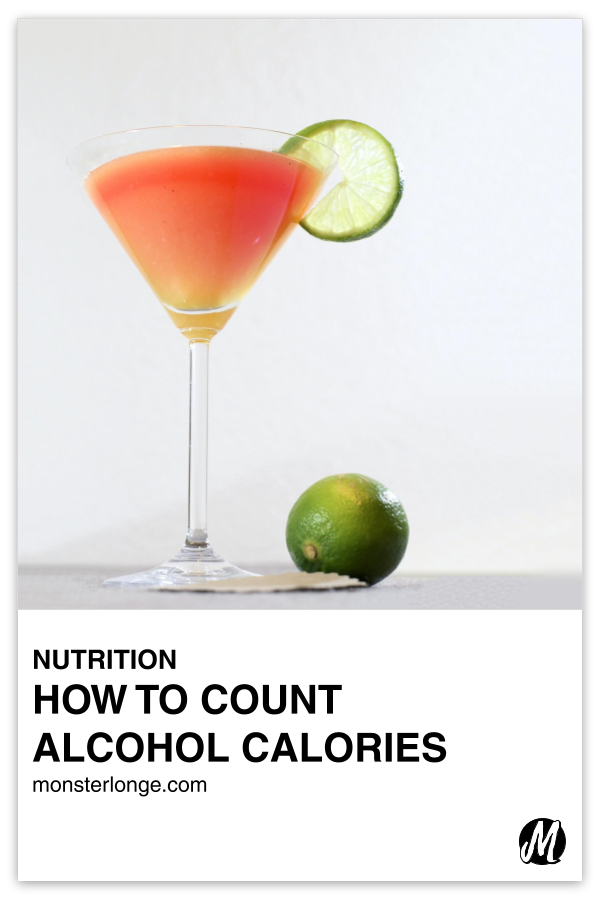
How To Track Alcohol Macros
Weddings and other family gatherings are boring, so who’s gonna do everyone the favor of livening things up and truly making it an evening to remember if you quit drinking just because you’re on a stinkin’ diet?
The good news is that you don’t have to!
Instead, you just need to account for alcohol like you would anything else.
NOTE: Alcohol provides calories and energy but not nutrients. As such, it isn’t necessary to sustain life like protein, fat, and carbs. So at 7 calories per gram, alcohol isn’t treated as its own separate macro. Instead, it falls somewhere in the middle of fat and carbs in its behavior and energy content. What follows below is an advanced math lesson on how to factor alcohol into your macros as a carb, fat, or combination of both.
DIRECTIONS: Look on the table for the calorie count of the alcoholic beverage of choice and then perform the specific math operation provided to determine its carb and/or fat content.
|
|
QTY |
CAL |
|
Beer |
12 oz | 154 |
|
Light Beer |
12 oz | 104 |
|
White Wine |
5 oz | 120 |
|
Red Wine |
5 oz | 125 |
|
Champagne |
4 oz | 90 |
|
Vodka |
1 oz | 64 |
|
Tequila |
1 oz | 69 |
|
Whiskey |
1 oz | 70 |
|
Scotch |
1 oz | 64 |
|
Rum |
1 oz | 64 |
|
Gin |
1 oz | 73 |
|
Bourbon |
1 oz | 64 |
|
Brandy |
1 oz | 77 |
TO COUNT ALCOHOL AS A CARB
Divide the total calories by 4.1Ex: 5 oz of red wine = (125 cals ÷ 4) = 31g carbs
TO COUNT ALCOHOL AS A FAT
Divide the total calories by 9.2Ex: 5 oz of red wine = (125 cals ÷ 9) = 14g fat
TO COUNT ALCOHOL AS BOTH
Divide one half of the total calories by 4 and the other by 9.3Ex: 5 oz of red wine = (125 cals ÷ 2) = 63 cals
(63 cals ÷ 4) = 16g carbs
(63 cals ÷ 9) = 7g fat
NOTE (1): If the grams of alcohol are provided but not the calories, then multiply the grams in alcohol by 1.75 to find the equivalent amount of carbs in grams. For fat, multiply by 0.78 to find the equivalent grams. Also, because we have the option of counting alcohol as both a carb and fat, you can halve the total grams of alcohol and then divide each half by each macronutrient’s respective multiplier. For example, let’s say a drink has 14g of alcohol. That means we can count it against our total macros as 25g carbs, or 11g fat, or 12g carbs AND 5g fat.414g alcohol × 1.75 = 25g carbs
OR
14g alcohol × 0.78 = 11g fat
OR
7g alcohol × 1.75 = 12g carbs
7g alcohol × 0.78 = 5g carbs
NOTE (2): Figuring out the nutrients in mixed drinks like cosmos and margaritas is hard because the calorie count depends on the exact mixer and other ingredients used, all of which have their own unique calories and macros that allow for a wider range of variance in the nutritional profile of cocktails than in beer, wine, and spirits when the alcohol by volume (ABV) is the same. So when drinking out, if the calorie count for a cocktail isn’t readily available on a menu or elsewhere, ask the bartender or conduct a search on your phone for the amount of alcohol used as the base then do the math for the carbs and/or fat in that serving of liquor. From there, make estimates for the other ingredients.
NOTE (3): If a nutrition label is provided on a beer, for example, still use one of the given formulas rather than relying on the listed information. What’ll happen if you don’t is that you’ll account for far less calories than are actually in the beverage, as all alcohol macros aren’t required by law to be labeled. As an illustration, the nutrition facts panel on a 12 oz Budweiser bottle says it contains 145 calories, 10.6g carbs, and zero fat. When we do the math, that means 42.4 calories are coming from carbs.5(10.6g carbs ÷ 4) = 42.4 calories So that means the remaining 102.6 calories are coming from protein, which they’re not because 1.3g is the listed amount of protein on the aforementioned label.
The effects of alcohol on weight are far and many.
For one, it impedes fat burning. Two, it boosts the appetite. And last, it affects decision-making so you make poor food choices. Because of this, many elect to do away with alcohol completely when trying to lose weight. However, that need not be the case when it’s consumed responsibly, which is by treating it as you would any other item that enters your mouth during a diet.
And how’s that?
Yeah, by accounting for its calories and macros with the provided information!
Glossary: calories, diet, dietary fat
